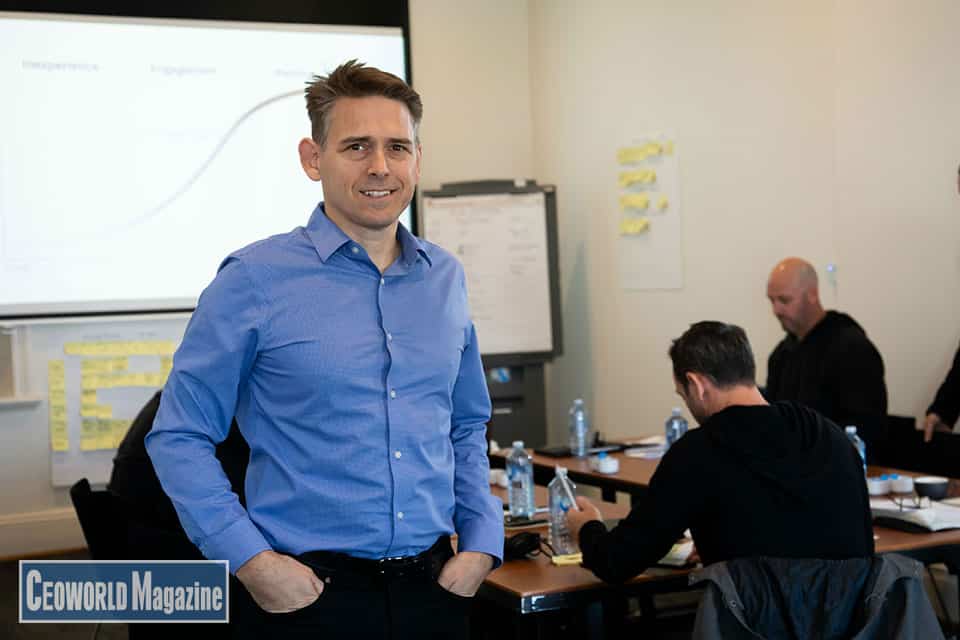The Five Roles to Evolve Beyond Your Leadership Comfort Zone

As a leader, the question you may be asking yourself either consciously or unconsciously is ‘how can I make my potential count for the most in this world of effort?’ And that is exactly the question you should be asking. In order to become more effective, perhaps it’s important to first consider a simple question that I’ve been intrigued by for more than twenty years. What is the tangible difference between a good leader, and a great leader?
Some might look straight to the CEO or general manager role and respond with net profit or shareholder return as defining this difference. But a truly great leader would have an enduring, positive impact not only on the immediate economics, but also the people, the employees, customers and suppliers, as well as the long-term growth and stability of the business. If we look to distil what a great leader does and can do each and every week to provide both short- and long-term value, I’ve identified 5 key roles that great leaders perform as well as the subsequent results the execution of those roles create.
- Accountability
Great leaders ensure that people know how to succeed in their role, to the point that it’s not possible to misunderstand, they ensure that KPIs which define roles are clear, measured and failure has a consequence that is transparent and is known by all employees and suppliers. Unlike some workplaces, people don’t walk out of meetings saying, ‘What a waste of my time!” Instead, team meetings are conducted with an agenda and data is available to effectively make decisions during meetings. As a result, leaders who effectively execute the accountability role improve the consistency of their results, due to higher discipline and tend to attract a higher percentage of top performers. - Ambassador
Great leaders know you can’t be the head of the company (or department) without being the face as well. They are involved as an ambassador in the engagement process for employees, customers, plans and initiatives. No matter the size, the business must have an ambassador to represent it in some form at a ‘ceremonial level’. It’s not possible to abdicate this role and ask others to attend to important events such as signing a new major client, winning an award or fronting the media. Equally having the leader in an ambassadorial role assist with onboarding new employees or discuss Core Values or Core Purpose stories regularly will help develop and maintain a more engaged workforce that contributes to a higher percentage of top performers and higher retention. - Culture
Every organisation has a culture, but some are cultivated to be great. With talented people being one of the greatest contributors to an organisations strategic value, and that leading to a war for the most talented people, consciously building a culture to attract and retain ideal employees is a critical role of a leader. By consciously building a great culture that delivers on the needs of the right people, great leaders become magnets for great talent which then leads to higher retention and higher productivity. - Strategy
Great leaders rely on a strategic system that delivers a unique and valuable position in the marketplace that is different than its competitors. Through a structured process of quarterly and annual planning, great leaders align strategy to successful execution delivering on the needs of their ideal customers and building strategic momentum over time. As a result, the organisation experiences higher productivity and consistent growth. - Succession Planning
Great leaders build systems to insure against people, products, customers or investments failing to perform. They are deliberately protecting the consistency of staff and supplier output and revenue stream consistency, knowing the impact on growth and profit and when successful the succession planning role contributes to consistent growth and consistent results.
Whatever leadership role you perform, or when you look to your peers in their leadership role, and how they perform it, consider these five roles and whether any of these might be absent. For the absence of a role, or a very low rating in one of these areas indicates the edge of the person’s leadership comfort zone. The area they are uncomfortable pushing beyond. But for a leader to truly achieve greatness and real results, it requires pushing beyond their leadership comfort zone.
Written by Brad Giles.
Have you read?
Most Charitable Billionaires In The United States
World’s Best Destinations For Business Travelers, 2020
Most Prosperous And Inclusive-Cities In The World
Media Billionaires: Richest Media Moguls In The World, 2019.
Bring the best of the CEOWORLD magazine's global journalism to audiences in the United States and around the world. - Add CEOWORLD magazine to your Google News feed.
Follow CEOWORLD magazine headlines on: Google News, LinkedIn, Twitter, and Facebook.
Copyright 2025 The CEOWORLD magazine. All rights reserved. This material (and any extract from it) must not be copied, redistributed or placed on any website, without CEOWORLD magazine' prior written consent. For media queries, please contact: info@ceoworld.biz








